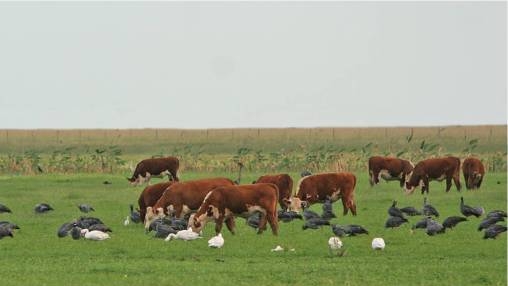Soon, the first certified meat from natural grasslands will be sold in supermarkets. This initiative is part of the Argentina Grasslands Project, whose goal is to conserve grassland biodiversity through sustainable management by combining conservation with production.
The Argentine Pampas forms part of the larger Pampas grasslands of southern South America, covering an area of one million square kilometers in four Mercosur countries: Argentina, Brazil, Paraguay and Uruguay. They constitute one of the richest areas of grassland biodiversity in the world, especially noted for plant species diversity (many of considerable economic value) and grassland-dependent birds
A new model for grassland conservation and cattle-ranching is already being implemented as a pilot in 18 livestock ranches in the provinces of Buenos Aires, Entre Ríos, Santa Fe and Corrientes. There the livestock breeds freely in the grasslands, that it is also the habitat for 500 bird species and 100 mammal species.
“Grasslands are also basis of biodiversity”, says Gustavo Marino, coordinator of the project developed by the two non-governmental organizations Aves Argentinas and Fundación Vida Silvestre Argentina and supported by a US$900,000 donation from the Global Environmental Facility (GEF), managed by the World Bank.
The main differentiation factor resides in natural grassland. “The quality and nutritional value of this beef is higher because its fat content is reduced. Moreover, the pastoral based system avoids the risks involved in feed lots, such as antibiotics, hormones, and bacteria that affect human health”, explains Marino.
During the last years, livestock lose millions of hectares because the expansion led by soybean cultivation, that covers nely 40% of the cultivated ea. Traditional cattle-breeding areas such as the Flooding Pampas now suffer from overgrazing. At the same time, intensive systems like feed lots increased. Nowadays, about 20-40 percent of the livestock comes from feed lots.

